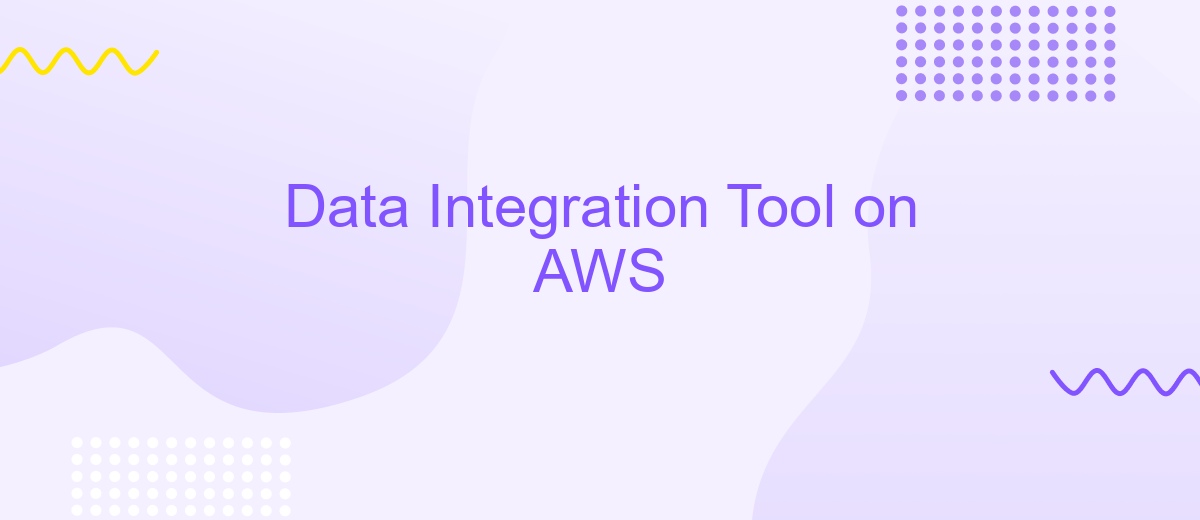Data Integration Tool on AWS
In today's data-driven world, integrating diverse data sources efficiently is crucial for actionable insights. AWS offers a robust suite of tools designed to streamline data integration processes. This article explores the key features and benefits of using AWS data integration tools, helping businesses to seamlessly connect, transform, and analyze their data for better decision-making and operational efficiency.
Introduction
Data integration is a critical aspect for businesses aiming to streamline their operations and achieve seamless data flow across various applications. AWS offers a robust and scalable platform for integrating data from multiple sources, ensuring consistency and accuracy. With the right tools, organizations can efficiently manage data pipelines and enhance their decision-making processes.
- Scalable infrastructure for handling large data volumes
- Secure and compliant data management
- Real-time data processing capabilities
- Comprehensive monitoring and analytics tools
One effective tool for setting up integrations is ApiX-Drive, which simplifies the process of connecting different applications and services. By leveraging ApiX-Drive on AWS, businesses can automate data workflows, reduce manual intervention, and ensure that data is always up-to-date across all systems. This combination of AWS's powerful infrastructure and ApiX-Drive's user-friendly interface makes it easier for organizations to achieve their data integration goals.
Key Features and Benefits

Data Integration Tool on AWS offers seamless and scalable solutions for integrating various data sources. With its robust architecture, it provides real-time data synchronization, ensuring that your data is always up-to-date. The tool supports a wide range of data formats and sources, including databases, cloud storage, and on-premises systems, making it versatile for diverse business needs.
One of the standout features is its user-friendly interface, which simplifies the process of setting up and managing integrations. For those looking to streamline their workflows further, services like ApiX-Drive can be integrated to automate data transfer between applications without any coding required. This not only saves time but also reduces the risk of errors. Additionally, the tool offers comprehensive monitoring and logging capabilities, allowing you to track data flows and troubleshoot issues efficiently. Overall, the Data Integration Tool on AWS enhances operational efficiency and ensures data consistency across your organization.
Architecture and Integration

Designing an effective architecture for data integration on AWS involves leveraging various services to ensure seamless data flow and transformation. AWS offers a plethora of tools such as AWS Glue, Amazon S3, and Amazon Redshift to facilitate data integration. These tools enable users to extract, transform, and load (ETL) data efficiently, ensuring that it is readily available for analysis and reporting.
- Set up data sources in Amazon S3 for scalable storage.
- Use AWS Glue to create ETL jobs for data transformation.
- Load transformed data into Amazon Redshift for analytics.
- Integrate third-party services like ApiX-Drive for additional data synchronization and automation.
By incorporating ApiX-Drive, users can automate data transfers between various applications and AWS services, enhancing the overall efficiency of the integration process. This hybrid approach not only streamlines data workflows but also ensures that data is kept up-to-date across different platforms, providing a robust and scalable solution for data integration on AWS.
Use Cases and Success Stories

Data integration tools on AWS have revolutionized how businesses manage and utilize their data. By providing seamless integration capabilities, these tools enable companies to combine data from various sources, ensuring consistency and accuracy across platforms.
One notable success story involves a retail company that leveraged AWS data integration tools to unify their sales, inventory, and customer data. This integration allowed them to gain real-time insights into their operations, leading to improved decision-making and increased sales.
- A healthcare provider integrated patient records and billing systems, reducing administrative overhead and improving patient care.
- A financial services firm used AWS data integration to consolidate data from different branches, enhancing their reporting and compliance processes.
- An e-commerce platform utilized ApiX-Drive to automate data flows between their online store and CRM, boosting customer engagement and retention.
These examples highlight the versatility and effectiveness of AWS data integration tools. By streamlining data management processes, businesses can achieve greater operational efficiency and drive growth. ApiX-Drive further enhances these capabilities by offering easy-to-use integrations that save time and resources.


Future Considerations
As we look towards the future of data integration on AWS, it’s essential to consider the evolving landscape of cloud technologies and the increasing complexity of data ecosystems. Organizations should prioritize scalability and flexibility in their integration tools to accommodate growing data volumes and diverse data sources. Leveraging services like ApiX-Drive can streamline the process, offering seamless integrations between various applications and databases, thus enhancing operational efficiency.
Additionally, security and compliance will remain critical considerations. Ensuring that data integration processes adhere to regulatory standards and protect sensitive information is paramount. Future-proofing your data integration strategy involves continuously monitoring and updating security protocols. Furthermore, the integration of AI and machine learning can offer predictive analytics and automation, further optimizing data workflows. By staying proactive and leveraging advanced tools, organizations can ensure their data integration processes remain robust and adaptive to future challenges.
FAQ
What is a Data Integration Tool on AWS?
Why should I use a Data Integration Tool on AWS?
How do I automate data integration tasks on AWS?
What are the security measures for data integration on AWS?
Can I integrate data from on-premises systems with AWS?
Routine tasks take a lot of time from employees? Do they burn out, do not have enough working day for the main duties and important things? Do you understand that the only way out of this situation in modern realities is automation? Try Apix-Drive for free and make sure that the online connector in 5 minutes of setting up integration will remove a significant part of the routine from your life and free up time for you and your employees.

